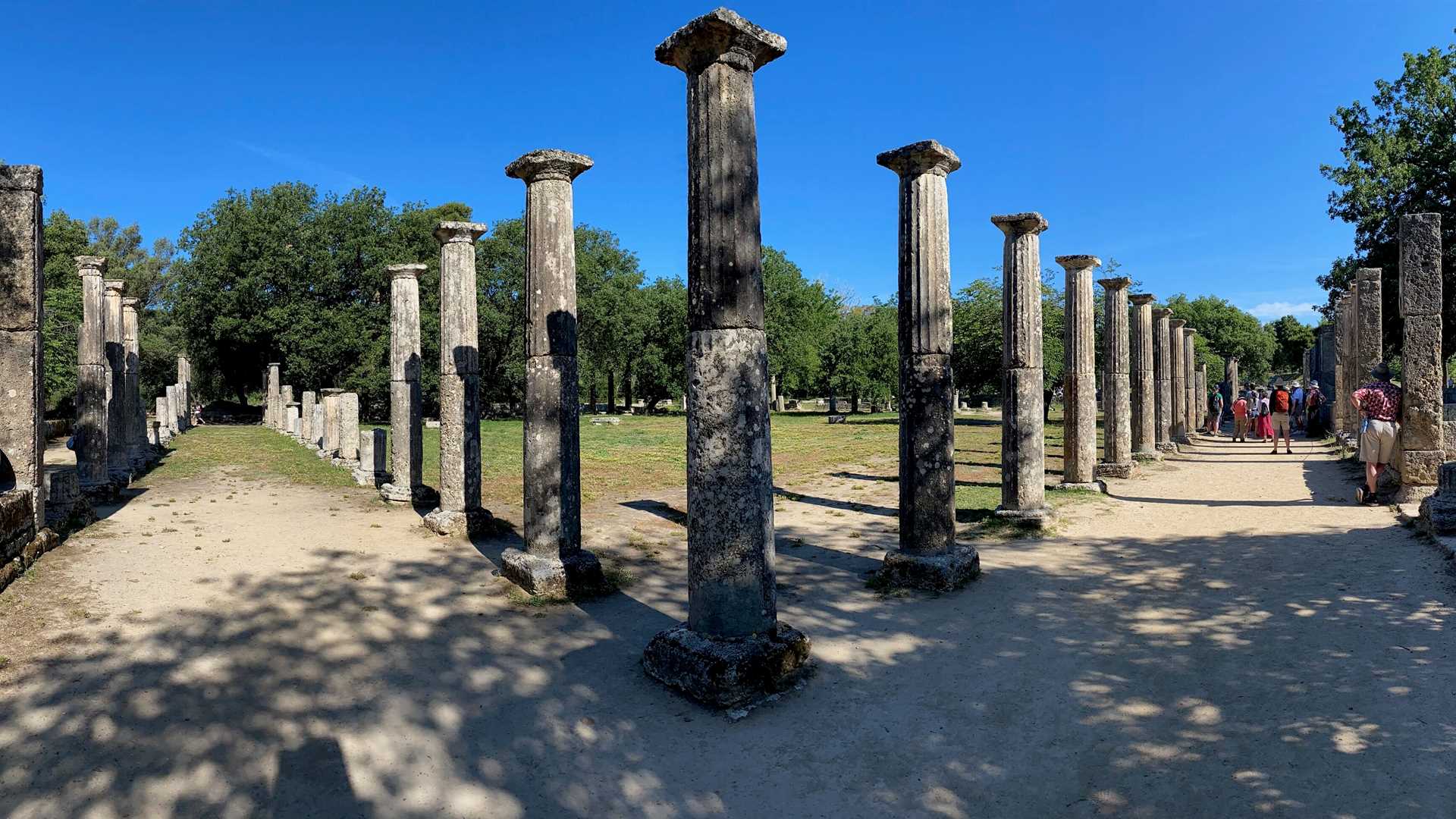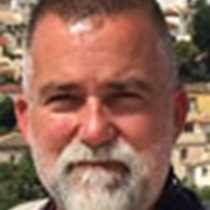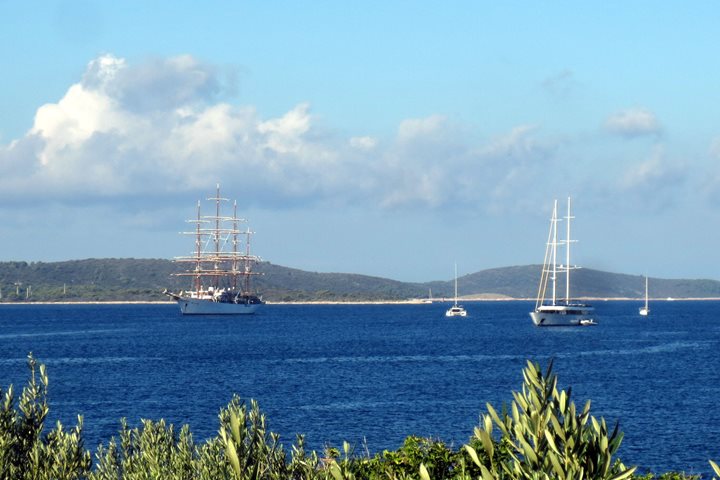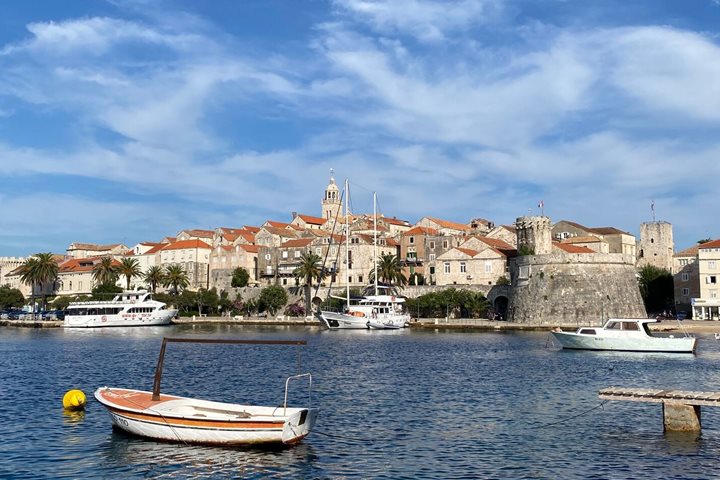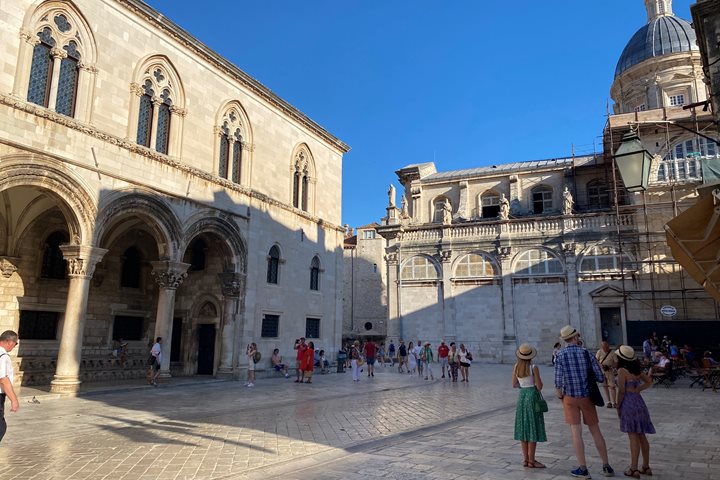Sea Cloud arrived this morning at Katakolon, a small port town of the western Peloponnese. Fortunately, ours was the only ship at the pier, and this boded well for our upcoming visit to the archaeological site and museum of ancient Olympia. After breakfast, we boarded coaches for the thirty-minute drive inland through the green and lush early summer landscape to arrive at the site of the original Olympics. Guides Gemma and Effie first took us to the archaeological site and explained the histories of the games and of the religious sanctuary. We made our way through the Palestra and entered the sanctuary area, viewing the remains of the Philippeion, the Temples of Hera and Zeus, the Nymphaeum, and the treasuries. We continued into the ancient stadium where many of our guests posed for pictures at the starting line of the Olympic races. Some guests even participated in an actual footrace down the length of the stadium in the glorious Olympic sunshine and heat of the midmorning.
From the archaeological site, we proceeded to the museum and viewed wonders of art, architecture, armor, religious rituals, and implements of the games. Unforgettable were the pediment sculptures of the Temple of Zeus, the winged Nike, and the exquisite marble statue of Hermes by the artist Praxiteles.
We returned to port where guests pursued a bit of souvenir shopping. By 1300 hours, we were all aboard, enjoying another Sea Cloud lunch buffet. The ship was gently piloted out of the port, heading into the Ionian Sea to find wind for the afternoon sailing.
And find the wind we did! Once most sails were up, the engines were cut, allowing engine room tours to be offered. In the late afternoon, historian David Brotherson offered a talk on Greek mythology and Homeric times. Taking advantage of the beautiful light and conditions, the hotel prepared and served dinner on the lido deck. We enjoyed a particularly beautiful sunset. Afterwards, many guests viewed the great historic film of square-rigged vessel sailing, Around Cape Horn, memorably narrated by Captain Irving Johnson. After checking the forecast, Captain John Svendsen decided to remain under sail overnight, and so we drifted off to sleep while quietly and smoothly sailing the Mediterranean.

